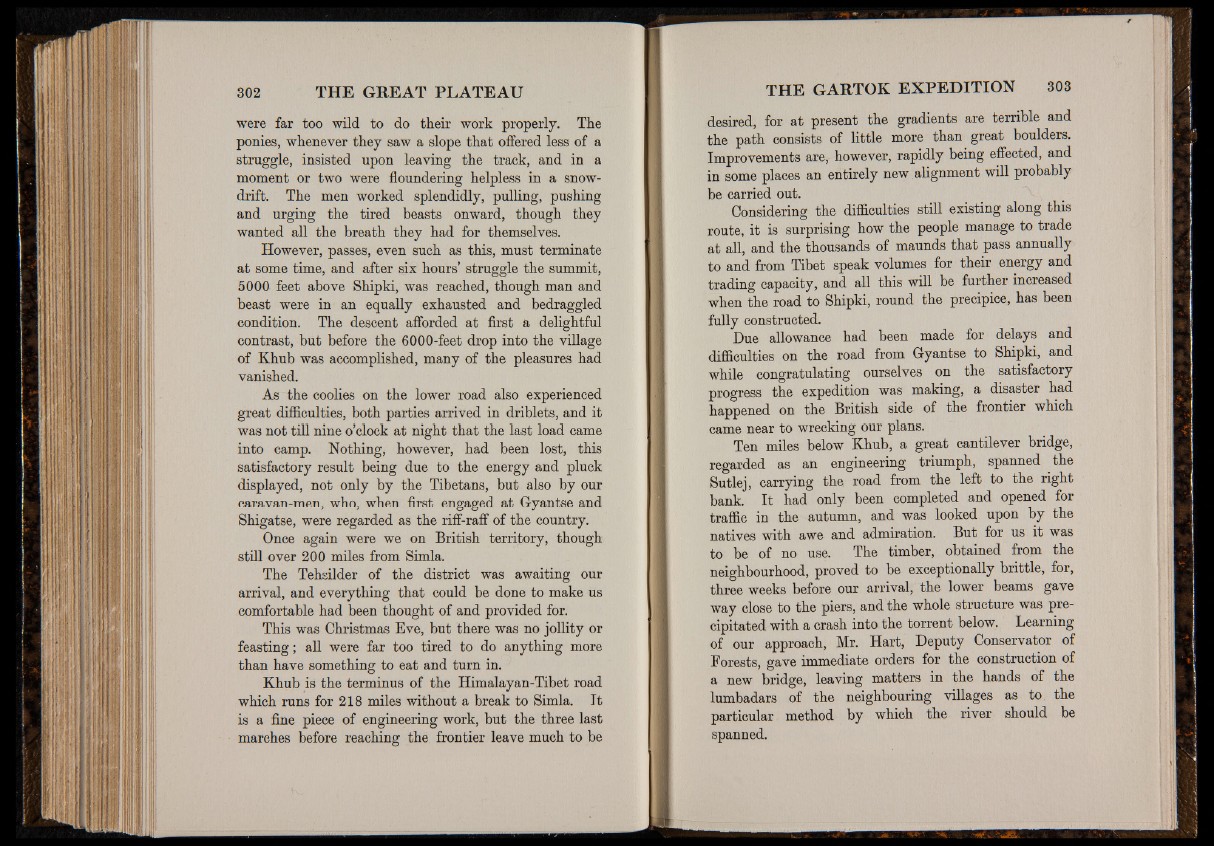
were far too wild to do their work properly. The
ponies, whenever they saw a slope that offered less of a
struggle, insisted upon leaving the track, and in a
moment or two were floundering helpless in a snowdrift.
The men worked splendidly, pulling, pushing
and urging the tired beasts onward, though they
wanted all the breath they had for themselves.
However, passes, even such as this, must terminate
at some time, and after six hours’ struggle the summit,
5000 feet above Shipki, was reached, though man and
beast were in an equally exhausted and bedraggled
condition. The descent afforded at first a delightful
contrast, but before the 6000-feet drop into the village
of Khub was accomplished, many of the pleasures had
vanished.
As the coolies on the lower road also experienced
great difficulties, both parties arrived in driblets, and it
was not till nine o’clock at night that the last load came
into camp. Nothing, however, had been lost, this
satisfactory result being due to the energy and pluck
displayed, not only by the Tibetans, but also by our
caravan-men, who, when first engaged at Gyantse and
Shigatse, were regarded as the riff-raff of the country.
Once again were we on British territory, though
still over 200 miles from Simla.
The Tehsilder of the district was awaiting our
arrival, and everything that could be done to make us
comfortable had been thought of and provided for.
This was Christmas Eve, but there was no jollity or
feasting; all were far too tired to do anything more
than have something to eat and turn in.
Khub is the terminus of the Himalayan-Tibet road
which runs for 218 miles without a break to Simla. It
is a fine piece of engineering work, but the three last
marches before reaching the frontier leave much to be
desired, for at present the gradients are terrible and
the path consists of little more than great boulders.
Improvements are, however, rapidly being effected, and
in some places an entirely new alignment will probably
be carried out. gp*
Considering the difficulties still existing along this
route, it is surprising how the people manage to trade
at all, and the thousands of maunds that pass annually
to and from Tibet speak volumes for their energy and
trading capacity, and all this will be further increased
when the road to Shipki, round the precipice, has been
fully constructed.
Due allowance had been made for delays and
difficulties on the road from Gyantse to Shipki, and
while congratulating ourselves on the satisfactory
progress the expedition was making, a disaster had
happened on the British side of the frontier which
came near to wrecking our plans.
Ten miles below Khub, a great cantilever bridge,
regarded as an engineering triumph, spanned the
Sutlej, carrying the road from the left to the right
bank. It had only been completed and opened for
traffic in the autumn, and was looked upon by the
natives with awe and admiration. But for us it was
to be of no use. The timber, obtained from the
neighbourhood, proved to be exceptionally brittle, for,
three weeks before our arrival, the lower beams gave
way close to the piers, and the whole structure was precipitated
with a crash into the torrent below. Learning
of our approach, Mr. Hart, Deputy Conservator of
Forests, gave immediate orders for the construction of
a new bridge, leaving matters in the hands of the
lumbadars of the neighbouring villages as to the
particular method by which the river should be
spanned.